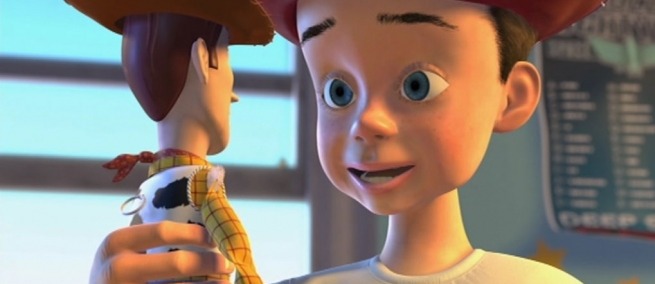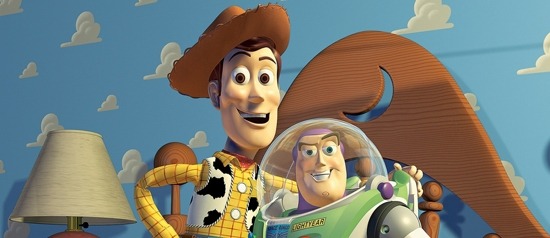
Danny in THE SHINING, Donnie in DONNIE DARKO, and Andy in TOY STORY each have imaginary friends. What do the characters in these movies gain from their fictitious relationships? Five-year-old Danny’s imaginary friend is Tony, a fifteen-year-old version of himself, who serves as his guide. The teenage Donnie learns that the world will end from his imaginary friend, someone in a rabbit costume named Frank. Six-year-old Andy imagines personalities of his toys Woody and Buzz Lightyear which are his constant companions.

In real life, in a case study reported by Public Radio Exchange (PRX) producer Pien Huang, four-year-old Casey is already a grandfather; his imaginary friend is a grandson named Georgie who drives monster trucks. Developmental psychologists are speculating that imaginary friends help children between the ages of three and five develop a theory of mind. Theory of mind is the ability to understand that other people are thinking or feeling things that are different from one’s own. (Typically, it is something that is difficult for people on the autism spectrum to model). PRX’s Sloan-supported podcast Transistor reports on Casey’s grandson as well as the contemporary psychologists who are debunking original psychoanalytic theories, which suggested that there was something problematic about children with imaginary friends.
Ira Flatow’s Science Friday has also taken up this subject. Luke Groskin has produced, directed, and narrated a three-part video series about imaginary friends featuring interviews with developmental psychologists Jacqueline Woolley, Marjorie Taylor, and Tracy Gleason. They are interested in what these imaginary relationships can teach scientists about the children who fantasize them. Friends include a tomato can, a fairy godmother, and a pair of pink-skinned girls. “When a child creates a relationship that is imaginary, what they put into that relationship is a lot of what they know about relationships,” says Gleason. “They use a lot of the same cues adults do to differentiate fantasy from reality from a young age,” says Woolley. “They distinguish reality from dreams, they know the difference between imagining something and thinking it […] Even by three and four they know from the start that those beings aren’t real.” “They love them, that love is real,” says Taylor. “One of the reasons children create imaginary companions is to deal with an emotional issue that they’re wrestling with,” adds Woolley.
New Yorker writer Adam Gopnik once wrote for the magazine about his four-year-old daughter’s imaginary friend: Charlie Ravioli. Ravioli is a paroxysm of New York social life, in which people are always too busy. He is never available when Gopnik’s daughter calls. She even invents another imaginary friend, Ravioli’s secretary Laurie, who communicates that he is too busy to talk. Gopnik, with the consultation of his sister the developmental psychologist Alison Gopnik, is reassured that imaginary friends are normal, but as a sister she suggests that maybe he should leave New York.
Museum of the Moving Image, in Astoria, will be screening TOY STORY in 3D from July 27 through August 7 in the afternoons as part of the Summer Kids Matinees screening series. Other films in this series include ZOOTOPIA.
Science Friday and PRX are supported by the Alfred P. Sloan Foundation to enhance public understanding of science.
TOPICS